MB has long questioned the shady relationship between our universities’ reliance on international student revenue and university rankings, which we label a “Ponzi scheme”.
The federal government and Australian universities established a structure to attract huge volumes of full-fee-paying overseas students through two channels.
First, the Australian government offers the world’s most generous student visa work rights and prospects for permanent residency.
Second, Australian institutions lowered admission and pedagogical standards to attract more students.
The economic windfall generated by increased international student numbers was funnelled into research to propel Australia’s universities up global rankings rather than into areas that helped the nation.
Because a higher global rating boosts a university’s reputation and indicates quality, universities use these higher rankings as a marketing tool to increase international student enrolment while justifying higher tuition.
Meanwhile, classroom teaching quality worsened, with the student-to-academic staff ratio rising considerably across Australia’s institutions in tandem with the rapid increase in international student numbers.
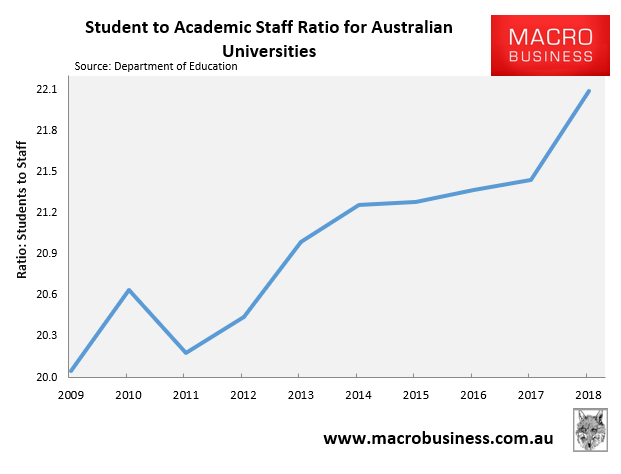
International student cheating became pervasive, Chinese influence ran rampant, and universities’ casualised and underpaid staff were forced into passing low-performing international students.


Domestic students were also required to help non-English speaking students complete their courses through group assignments. Some tutorials were even conducted in foreign languages, degrading the experience for local students.
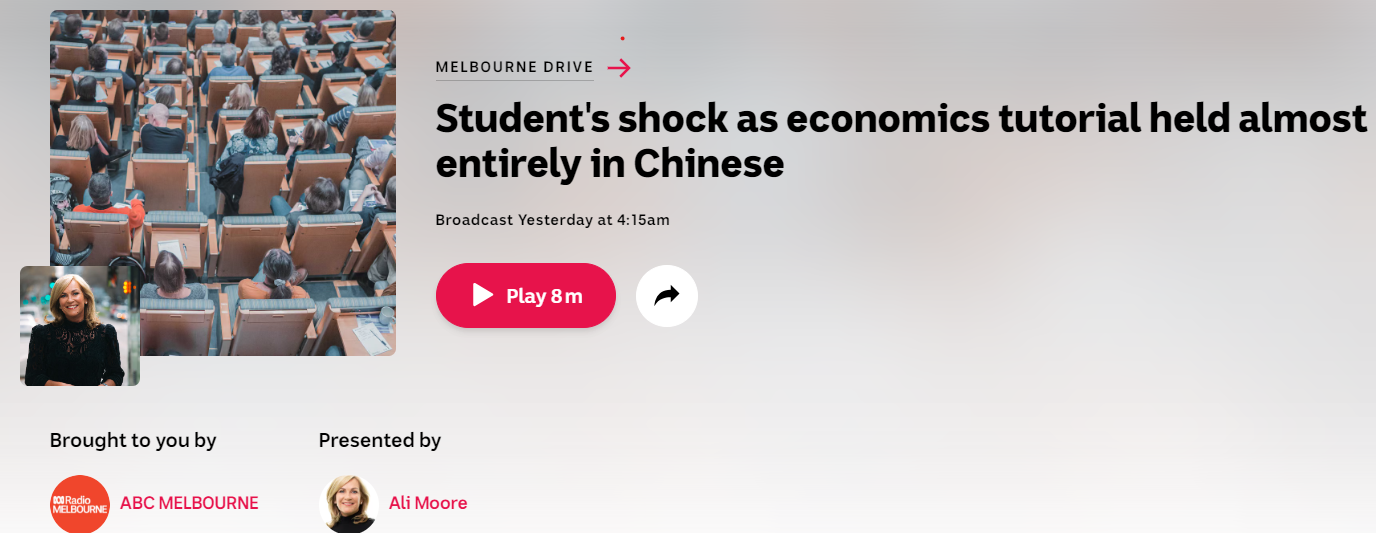
In 2023, the Times Higher Education World University Rankings showed that Australian universities had fallen due to reduced international student numbers over the pandemic.
Phil Baty from Times Higher Education said the latest data reflects Australia’s relative isolation during the COVID-19 pandemic.
“First of all, while Australia is one of the world’s leading university sectors for attracting international talent and collaboration, the relative isolation of the country during the pandemic is showing up in the data, to a detrimental effect on universities’ ranking positions”, Baty said.
“Real attention is needed to ensure Australia continues to be open to international talent, which includes the right policy incentives as competition for international talent heats up with possible shifts in the market”.
Curiously, the Times Higher Education World University Rankings give extra points for the proportion of international students enrolled. Thus, having more international students equals a higher ranking (other things equal).
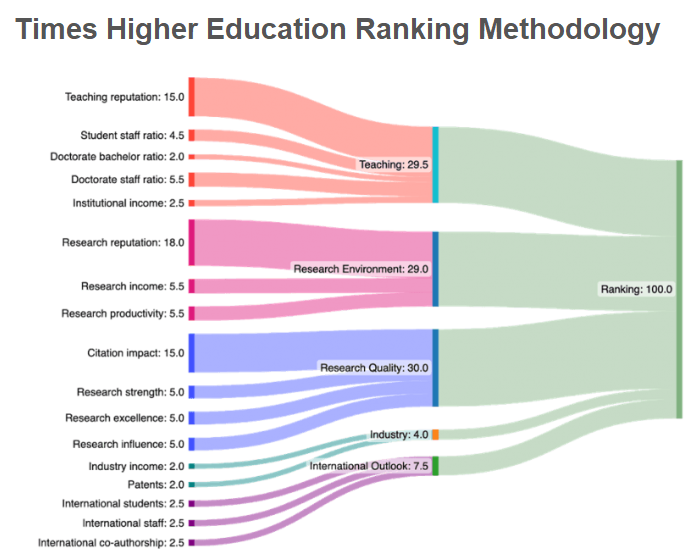
Even more curiously, only 29.5% of a university’s ranking is based on actual teaching, whereas research accounts for 59%.
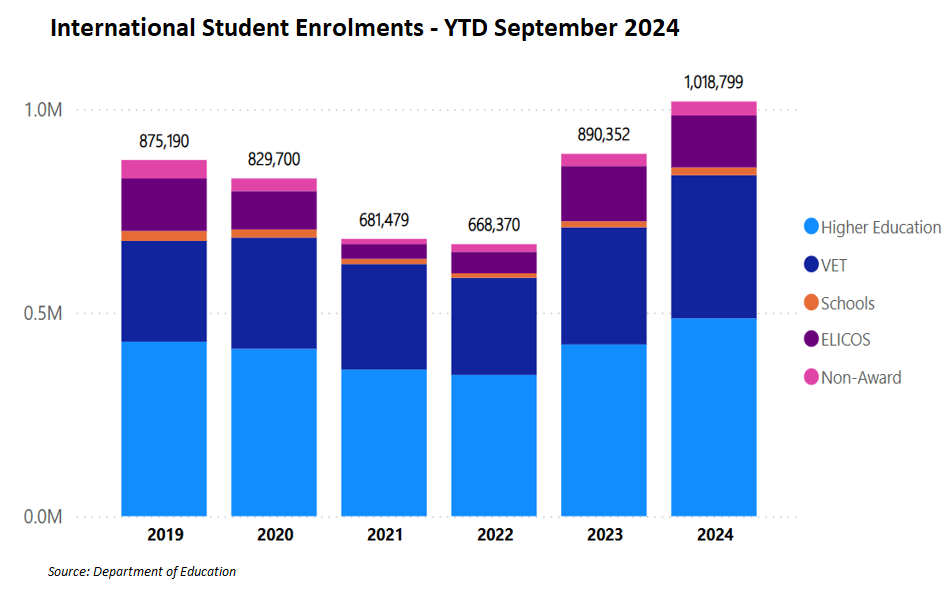
Australia increased its international student enrolments to record levels last year, which has resulted in Australian universities storming up the rankings.
The University of Melbourne is considered Australia’s most prestigious university globally, a survey of 55,000 academic experts has revealed.
Ten of the 300 universities ranked in the Times Higher Education Reputation Rankings 2025 were Australian, with Melbourne at No. 47.
The University of Sydney was at 60, while Monash University was at 63…
The University of Melbourne climbed a few spots, while Monash jumped almost 20 places since the last ranking in 2023, and the University of Queensland moved up about 10 places to 78. All Group of Eight research universities made the list, with Australian National University and UNSW also making it into the top 100.
UNSW appeared in the top 100 for the first time since 2020.
The following graphic shows the scoring for Australia’s top institution, the University of Melbourne:
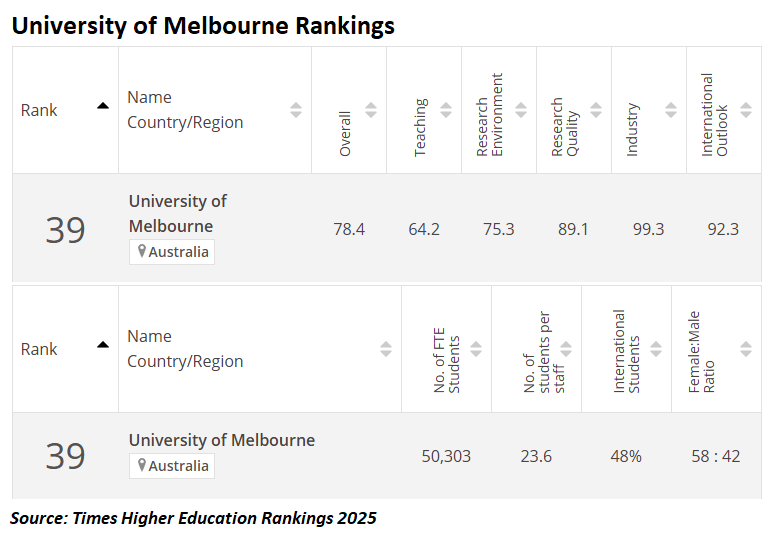
As you can see, Melbourne University ranks poorly on teaching (64.2) but highly on research and internationalisation.
Melbourne University’s student-to-staff ratio is abysmal (23.6), and it has one of the world’s highest concentrations of international students (48%).
What a marvellous ponzi scheme for Australian universities: 1) Bring in plane loads of international students. 2) Pump the fee revenue into research. 3) Achieve a high ranking. 4) Use it to market to more international students. 5) Rinse and repeat.
Meanwhile, the experience of local students continues to degrade.
Australia’s universities have the highest proportion of international students in the developed world, and the rankings reward them accordingly. What a farce.
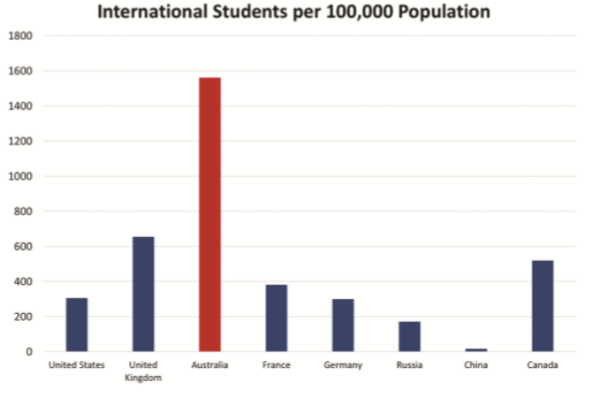
Source: Salvatore Babones (2019)
Running low-quality student visa mills for maximum throughput was never in the national interest.

